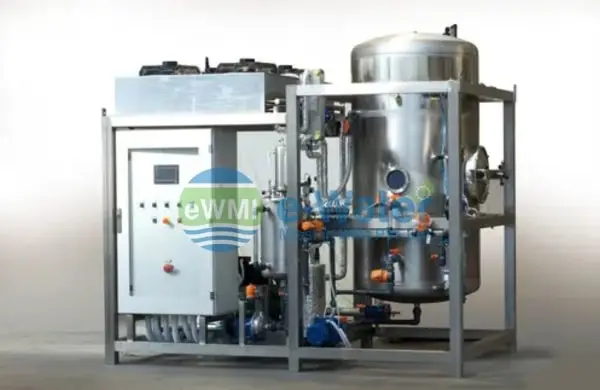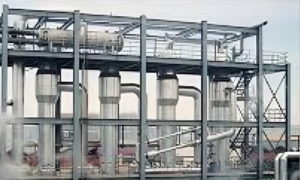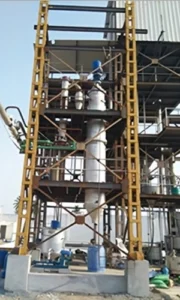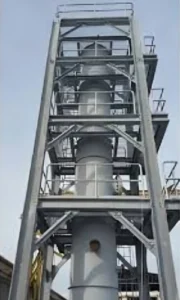Zero Liquid Discharge (ZLD) Plants
Water & Waste Water Systems
- Effluent Treatment Plant
- Sewage Treatment Plant
- Water Treatment Plants
- Reverse Osmosis Plant
- Demineralization ( DM ) Water Treatment Plants
- Zero Liquid Discharge Solutions
- Chemicals for Primary Treatment / Physiochemical Treatment
- Secondary treatment / Biological treatment
- Tertiary Treatment
( Polishing of Water)

Our ZLD Plant Solutions e-Water Mission India Pvt. Ltd. creates tailored Zero Liquid Discharge plants to fit the particular requirements of different sectors.
what we provide
- Essential for removing big particles and suspended solids from the wastewater, pre-treatment systems help to make it appropriate for more treatment.
- Using cutting-edge reverse osmosis (RO) and nanofiltration (NF) technology, we extract clean water from wastewater and isolate pollutants.
- Our evaporation systems reduce the leftover wastewater to a sludge-like consistency, which can subsequently be processed or disposed of correctly.
- The last phase of a ZLD system is crystallization of leftover solids, which lets businesses either environmentally responsibly dispose of waste or recover beneficial by-products.
Why Select e-Water Mission India Pvt. Ltd. for ZLD Plants?
- Years of experience in wastewater management have helped us to specialize in the design, installation, and maintenance of ZLD plants, providing unmatched efficiency and sustainability.
Every industry and business has different water treatment needs, so we provide customized solutions. Our ZLD systems are completely configurable to fit the particular requirements of your wastewater and water reuse objectives. - We provide you the most economical and efficient ZLD systems available by using the newest developments in membrane filtration, evaporation, and crystallization technologies.
Though ZLD systems are complicated, we aim to make them inexpensive by means of design optimization and operational cost reduction over time. By reducing water use and disposal expenses, our systems are designed for long-term savings. - Our ZLD solutions are meant to be sustainable; hence, they assist companies in lowering their environmental impact and cut water waste. Implementing ZLD helps you to safeguard the environment and save water worldwide.
Industries We Support
- Textile: To treat dye-rich effluents and make sure all wastewater is reused or appropriately treated.
To control dangerous effluents and reclaim water for manufacturing reuse. - Chemical: To treat complicated effluents containing dangerous compounds and lower environmental effects.
Assisting to treat organic wastewater and reclaim water for processing use next. - Paper and Pulp: Overseeing paper mill wastewater to guarantee low waste production and water recovery.
Benefits of Zero Liquid Discharge (ZLD) Systems
- ZLD systems guarantee no effluent is released into the environment, hence greatly lowering pollution and environmental effects.
- ZLD plants enable businesses to recycle treated water, thereby supporting water conservation initiatives as scarcity becomes more worrisome.
- ZLD enables businesses to follow local and international environmental rules, hence avoiding fines and strengthening corporate social responsibility (CSR).
The last by-products from a - ZLD system are small and may usually be thrown away as solid garbage, hence reducing waste production.
- Though ZLD systems need an upfront investment, their operational costs are saved over time by lower water use and disposal fees. They also do away with the requirement for facilities treating discharges on a massive scale.
Our Method
We begin with a comprehensive examination of your wastewater makeup and treatment objectives.
Custom Design: Our research results in a completely tailored ZLD system that best meets your requirements, hence guaranteeing optimal efficiency and compliance.
Our knowledgeable staff installs and integrates the ZLD system into your business with the least disturbance to your operations.
We give your team thorough training on how to run the ZLD system and continuous support and maintenance to guarantee the best performance.
Contact Us
Contact us now if you want to know more about our Zero Liquid Discharge (ZLD) plants or if your wastewater management system requires a consultation. e-Water Mission India Pvt. Ltd. is prepared to assist you in implementing a sustainable water management system guaranteeing regulatory compliance, environmental impact reduction, and waste minimization.
- Residential Buildings and Housing Societies
- Commercial Complexes and Malls
- Hotels and Resorts
- Educational Institutes and Campuses
- Hospitals and Healthcare Centers
- Industrial Parks and SEZs
- Municipal Corporations and Smart Cities
A) Evaporator
Multi Effect Evaporator :
Falling Film Evaporators are used for processing liquors, which are sensitive, have a high rate of specific heat
transfer, particularly for non-crystalline solutions. The liquid to be evaporated is evenly distributed on the
inner surface of a tube. The liquid will flow downwards forming a thin film, from which the boiling/evaporation
will take place because of the heating media such as steam, thermic oil, hot water etc.,
- Easy to manage reject management
- Used to treat High TDS water.
- Condensed water from evaporator is reused to boiler, so heating element consumption is reduced
- Minimum 50°C temperature is maintained in condensate water.
- Easy Maintenance
- Cost Effective
- High quality and Optimal performance.
- Chemical Industries,
- Drug Industries,
- Pharma Industries,
- Refineries,
- Leachates,
- Textile Industries,
- Tanneries,
- Rubber Industries,
- Automobile Industries,
- Food & Beverages
- Caustic Recovery Plant
- PVA Recovery Plant
- Milk Concentration
- Sugar Concentration
- Product Concentration
Falling Film Evaporators :
Forced Circulation Evaporator :
Forced Circulation Evaporator is used if boiling of the product on the heating surfaces is to be avoided due to
the fouling characteristics of the product, or to avoid crystallization. The flow velocity in tubes must be high,
and high capacity pumps are required. In Forced Circulation Evaporator plant, the solution to be evaporated is
circulated by circulation pump through the heat exchanger tubes with high velocity from bottom to the top.
The vaporization takes place in the vapour head, where the vapour and liquor are separated by gravity and / or
by centrifugal force.

- Easy to manage reject management
- Used to treat High TDS water.
- Condensed water from evaporator is reused to boiler, so heating element consumption is reduced
- Minimum 50°C temperature is maintained in condensate water.
- Easy Maintenance
- Cost Effective
- High quality and Optimal performance
- Chemical Industries,
- Drug Industries,
- Pharma Industries,
- Refineries,
- Leachates,
- Textile Industries,
- Tanneries,
- Rubber Industries,
- Automobile Industries
- Food & Beverages
- Mixed Salt Recovery
- Pharmaceuticals & Bulk Drugs
- Fish Mill
- Sugar Mills
- Electroplating Industries
B) Agitated Thin Film Dryer
Agitated Thin Film Dryer is a heat transfer equipment manufacturing and supplying.
In Agitated Thin Film Dryer, a thin layer of high TDS solution or Mother Liquor of waste water is distributed on
the Heating Surface of the ATFD Inner shell. In the jacket steam is supplied for heating of the same liquid. Solid
reaches the bottom having less than 5% moisture (depends on the product’s physical properties).
- Eliminating Solar Plant
- Saturation Solution to Mixed Salt
- Smooth and Trouble Free Operation
- Drying of Solids
- Effective Heat Transfer
- Minimum space required
- During rainy season there is no need to stop production or reduce the production
- Reliable operation
- Easy to maintain reject management

- Chemical Industries,
- Drug Industries,
- Pharma Industries,
- Refineries,
- Leachates,
- Textile Industries,
- Tanneries,
- Rubber,
- Automobile Industries
- Food & Beverages
- Mixed Salt Recovery
- Pharmaceuticals & Bulk Drugs
- Fish Mill
- Sugar Mills
- Electroplating Industries
C) Stripper Column
If high boiling solvent present than it will be comes bottom of stripper and it will be transfer into MEE followed by ATFD. If high boiling solvent present in MEE feed and it can Azetrope with water than COD value will be come around 1500 to 2000 PPM in MEE Condensate water and if it’s not done. Azetrope with water than it will be come in ATFD salt.
- Reboiler
- Stripper Column
- Flash Tank
- Surface Condenser

- Reduce COD Level
- Resistant to Corrosion
- Chemical Industries
- Pharma Industries
- Rubber Industries




